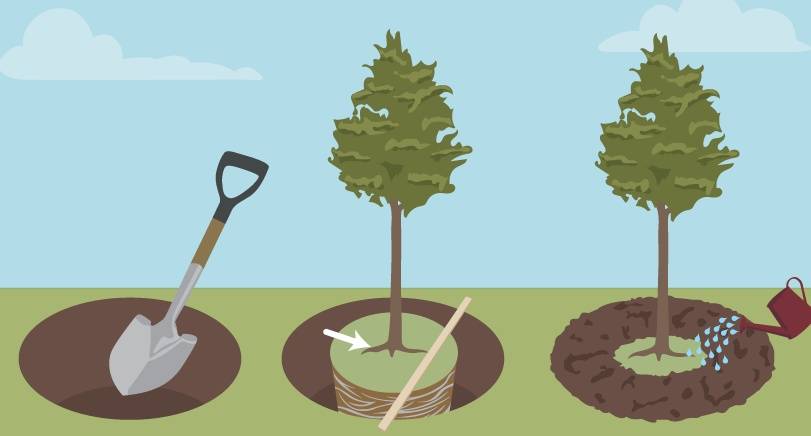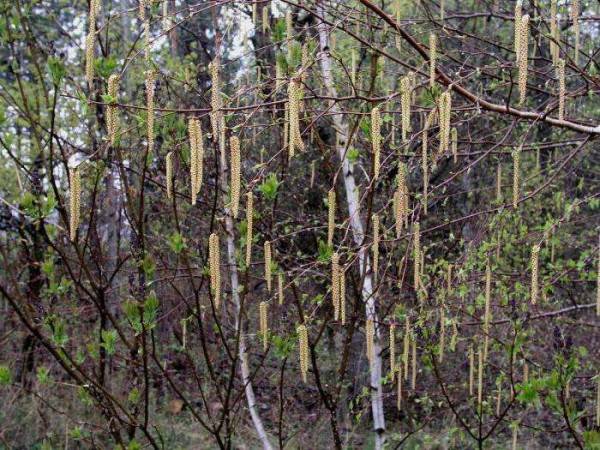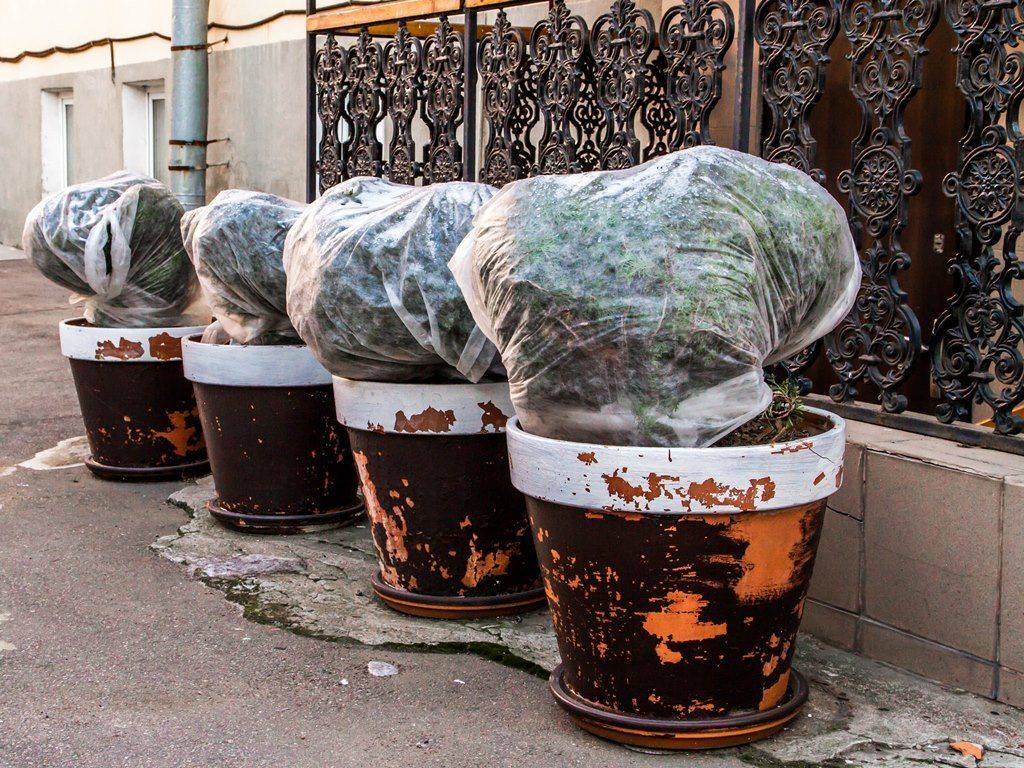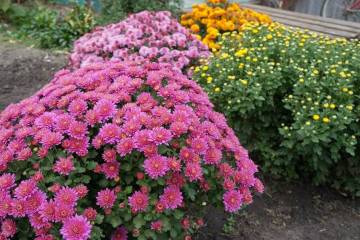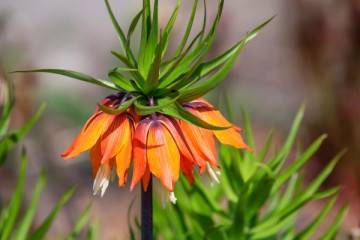Planting trees in spring, beautiful ornamental trees
Content:
Planting trees is easy at first sight. But digging a hole and placing a stalk in it is only half the battle. There are a number of rules and recommendations, non-observance of which will lead to the fact that the planted trees will not grow.
Planting trees in spring
Planting trees in spring is the gardener's golden rule. Disembarkation is carried out from the moment the snow melts and continues 2 weeks before the buds begin to appear.
In early spring, the plants are calm. But as soon as they start to "wake up", tree planting is impossible.
How to choose beautiful trees for your garden
Landscaping of the territory is a crucial moment. The appearance of the site depends on the correct choice of species and varieties of plants. Before planting trees, you need to choose them and decide how to beautifully and harmoniously combine decorative and fruit specimens on the same territory.
Trees with earrings
Trees with earrings look unusual and delicate, they are especially good during the flowering period, when lush "garlands" hang from the branches:
- Warty birch - has earlier flowering, catkins are complex inflorescences. They are used in folk medicine to treat many diseases.
- Walnut representatives - walnut, black, gray walnut, hazel.
- Hazel or hazel - represented by both trees and shrubs. Earrings bloom before leaves.
- Alder - blooms in autumn when foliage has fallen.
- Catalpa are trees with white flowers and long earrings.
- Hornbeam is a broad-leaved and shade-tolerant tree, earrings appear simultaneously with leaves.
- Aspen - flowering to the leaves, catkins are long, thin.
These are common trees of the Moscow region, they grow well in this climate, their cultivation and care is not difficult.
Mini trees
If the dacha is on a small piece of land that you want to plant with both decorative and fruit trees, dwarf plants are the best choice.
Mini trees can be fruit and ornamental. In addition to excellent fruiting, they are distinguished by an excellent aesthetic appearance. Without a doubt, they will decorate the backyard area. These include pears and apple trees, peaches and apricots.
Trees with red leaves
It is easy to create a real forest with all the riot of its colors - it is enough to plant trees with red leaves interspersed with green plants:
- cherry-leaved plum Pissarda;
- Red-leaved maple;
- hanging birch Purple;
- Plane maple;
- beech;
- fan maple.
In the Russian Federation, these plants grow well and are often found in forests.
Evergreen trees
So that with the onset of winter the garden does not plunge into the gray colors of bare branches, it must be decorated with evergreen trees, for the most part these are conifers:
- common or European spruce;
- Chilean Araucaria;
- Japanese fir;
- tuya;
- rhododendron;
- Fotinia Fraser.
Stump trees
Such plants are a real work of art. Grafted on a trunk can be:
- wake up;
- Apple tree;
- plum;
- cherry;
- conifers.
How to choose a large-sized seedling
It will take about 1 year to build a house, and it will take at least 10 years to plant greenery around it. For those who want "now and quickly", there are large-sized trees. Planting them makes it possible to get a tall adult plant in a matter of months. The main thing is to choose the right and suitable specimens.
You can use trees growing wild in forest plantations, but this is a difficult task, because you need to dig up a plant with a large clod of earth. You can buy a cultivated seedling in the nursery.
When choosing planting material, you need to pay attention to the following indicators:
- The size of the root soil - its diameter should be at least 10 times the diameter of the trunk at its base, the height should be at least 70-100 cm.
- The trunk should swing with the root block of earth, not separate from it.
- The bark is complete, without dents or damage.
If the branches of deciduous trees are damaged, they can be cut without damaging the plant. The situation is different with conifers. Bad shoots on them cannot be restored, the likelihood that they will grow back after pruning is practically absent.
You need to choose only those specimens that have been grown under identical conditions in comparison with those where they will be planted. Siberian trees will not be able to adapt in southern latitudes, and Ural trees will quickly die in hot climates with dry weather.
How to choose a landing site
The choice of a suitable location depends on the characteristics of the plant. Some prefer shade and moisture, others are drought-resistant.
General recommendations:
- Stone fruits - preference is given to the western direction, with well-heated soils.
- Beautiful trees with flowers do not tolerate closed areas with moisture retention and cold air.
- Coniferous representatives - prefer soft soil, in partial shade, with diffused light.
Each plant has its own recommendations regarding its location. Ate heat-tolerant plants, they should be placed in partial shade with a short exposure to open sunlight. But it must be remembered that not a single plant can stand strong winds and constant drafts, especially trees on a trunk.
Pit preparation
The soil requires rainfall, which lasts about 2 months. If the plant sits down before the cold weather, the pit is prepared in July - August.
To grow a tree, you need to proceed as follows:
- Dig a hole, fold the top layer of soil to the side, it will need to be enriched with mineral fertilizer.
- If the soil in the pit is clayey, add peat, sand or sawdust to it.
- Shape the pit into a round or oval shape.
- Observe the correct size: This depends on the diameter of the roots and how large the tree itself is. Medium sizes: width from 60 to 80 cm, depth from 60 to 70 cm.
- Add top dressing 3 to the pit, calculation - for 1 m2 - 2 buckets of humus or compost, purchased funds are suitable.
To determine the acidity of the soil, there is a pH determinant. Only one type of formula can be used.
Tree care after planting
The first 24 months after planting or transplanting, the tree needs to be watered and fed with nutrient mixtures once a week. The dosage of the mixtures indicated on the package should be halved.
When the tree reaches the age of 5 years, you need to feed it no more than 1 time a month, as well as water it. In the future, after 3 years, watering and replenishment is introduced once a year.
Planting and transplanting fruit trees
Planting fruit trees begins with the selection of high-quality planting material and with the preparation of holes with fertile soil.
How to properly plant fruit tree seedlings
To plant, you need to adhere to the following rules:
- Disembarkation is carried out only after the thaw comes.
- If the soil is heavy, planting is possible only in spring.
- Species that love warmth - apricots and peaches - are planted after the frost has completely disappeared.
How to plant an apple tree
The size of the hole depends on which apple tree will be grown:
| Diameter (cm) | Depth (cm) | |
| Tall | 100 to 110 | 70 |
| Medium height | 100 | 60 |
| Undersized | 90 | 50 |
The distance between the holes is at least 3 m. Nutrients must be added to the ground in the hole:
- compost 5 kg;
- potassium chloride - 70 g;
- superphosphate - 100 g;
- dolomite flour - 1 kg (used on acidic soil).
Drainage is thrown to the bottom - chipped wood, broken brick, nutshells. The earth is filled up on ½ of the hole, the soil alternates with the nutrient mixture. A hill is formed, retreating from the middle, a stake is driven into it, its height is 1.5 m. This is a support for the apple tree.
The apple tree is placed in the middle of the earth's embankment, the roots are straightened, covered with earth. The root collar should be left above the ground to a height of 2 to 5 m.
Watering - about 15-20 liters of water per well. The soil is mulched with humus or rotten leaves.
The timing of planting fruit trees and shrubs on the site
The optimal time is from September to November, depending on the weather. During this period, the roots actively develop and regenerate. With the onset of spring, the growth of new roots begins.
Mini potted trees in the garden
Small live plants in tubs and wooden flowerpots can be outdoors until the onset of cold weather. For the winter, they need to be brought to a warm place. If this is not possible, they must be wrapped in a horizontal state against frost.
Proper preparation of plants before cold weather will help maintain their health and decorative characteristics.
Features of planting trees and shrubs in the fall
The names of trees that are not recommended to be planted before cold weather:
- cherry;
- Apple tree;
- apricot;
- peach;
- pear;
- sweet cherry;
- almond.
What trees and shrubs take root well during autumn planting
Planting and transplanting before the onset of cold weather is recommended for such varieties:
- chokeberry;
- willow;
- mulberry tree (mulberry);
- columnar and simple conifers;
- nut;
- chestnut;
- honeysuckle;
- raspberries.
You can plant a winter-hardy apple and pear.
Why is it better to plant shrubs in autumn and trees in spring
Planting is recommended in late April or early May, while the dormant period lasts and the plants do not have buds. The growth of roots in the bushes does not stop in winter. The roots are renewed and formed, with the onset of warmth they will begin to actively develop.
Pros and cons of autumn planting
Benefits of planting plants before winter:
- Benefit - planting material is cheaper, therefore it is possible to save money on the purchase of even rather rare specimens.
- Simplicity - after planting, it is enough to water the plants.Dew and rain, coolness and moderate sun will help the plant to take root better.
- Saving time - in spring and summer, the gardener spends a lot of time and effort on maintaining the beauty and health of the planted plants.
Disadvantages:
- Frost can come suddenly and destroy plants.
- Cold and strong wind, ice, heavy snow negatively affect the growth of roots.
- The bark can be damaged by rodents.
When planting before winter, you need to take into account the fact that the vagaries of the weather will destroy all the gardener's efforts. But even in early spring, the possibility of a temporary return of frosts and snows is not excluded.
Having made the decision to decorate your site with trees, you need to choose the right types of trees, taking into account the climatic conditions. And when planting, strictly follow all the rules so that the trees take root well.
